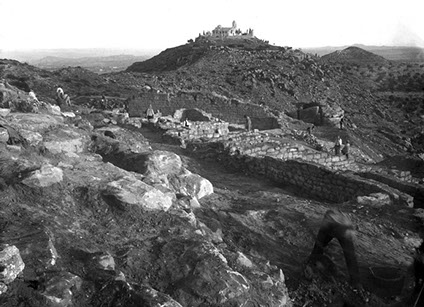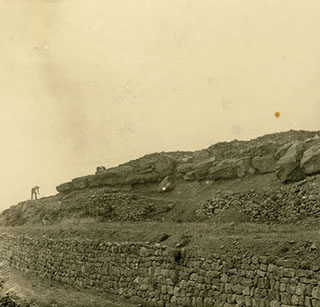català
español
english
français
Archaeology and political and cultural Catalanism
The origins of an exceptional decade, 1907-1914
World War 1, Mancommunity, IEC and Pere Bosch Gimpera
1915. A first attempt at professionalization
Catalan archaeology’s prodigious decade
Catalan archaeology in and beyond Catalonia
The great adventure in Baix Aragó
The Balearic and Pityuses Islands: the personal project of J. Colominas
The final agony of a prodigious decade
The great adventure in Baix Aragó
The beginning of the 20th century was a time of great social and cultural change in the region of Baix Aragó. It was associated with the regeneration of Catalan political activism that often went beyond strict provincial and regional boundaries and led, for example, Juan Cabré to explore and excavate between 1902 and 1905 the settlement at Sant Antoni de Calaceit in Baix Aragó. In 1902 the Boletín de Historia y Geografia del Bajo Aragón was founded by an association of prominent local citizens. This publication contained reports of archaeological, documentary and library research and was published from January 1907 to December 1909.
The Boletín group included Santiago Vidiella Jassà, Lorenzo Pérez Temprado, Mariano Galindo Garcia, Matias Pallarés Gil, Bernardo Gerona Ferrer, Julián Ejerique Ruiz and Juan Cabré Aguiló, all of whom kept in close touch with Catalan cultural associations and prominent representatives of Catalan culture during the first three decades of the 20th century. Nevertheless, the most active and relevant researchers in the field of archaeology, first with the Museums Board and then the Institute of Catalan Studies, were Santiago Vidiella, Lorenzo Pérez (municipal secretary of the village of Massalió), Matias Pallarés (a tailor with a workshop in Barcelona) and Juan Cabré.
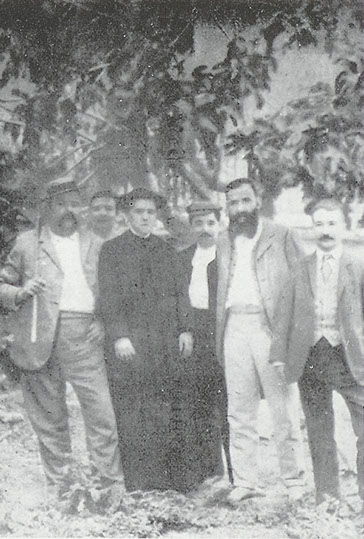
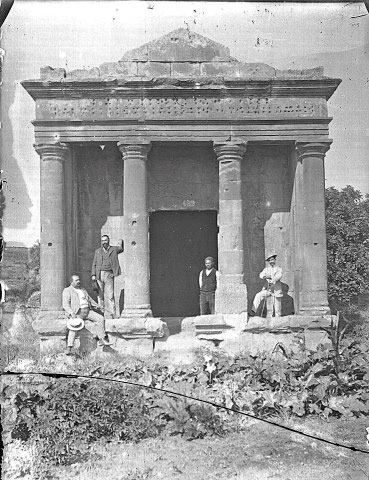
Members of the Boletín de Historia y Geografía del Bajo Aragón group at Favara (Zaragoza).
Photo: Juan Cabré.
Spanish Institute of Cultural Heritage Photographic Archive.
Boletín de Historia y Geografía del Bajo Aragón group. From right to left: Maties Pallarés, Lorenzo Pérez Temprado, three unknown people, and Santiago Vidiella.
Unknown author.
Private collection.

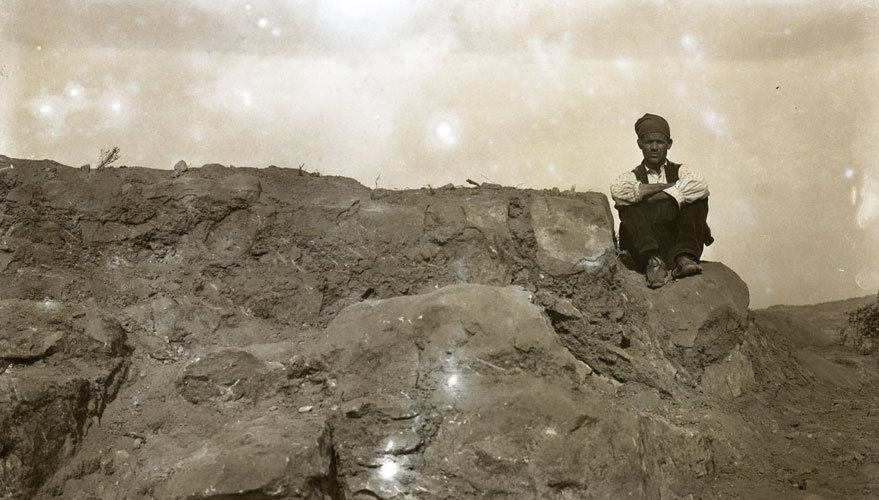
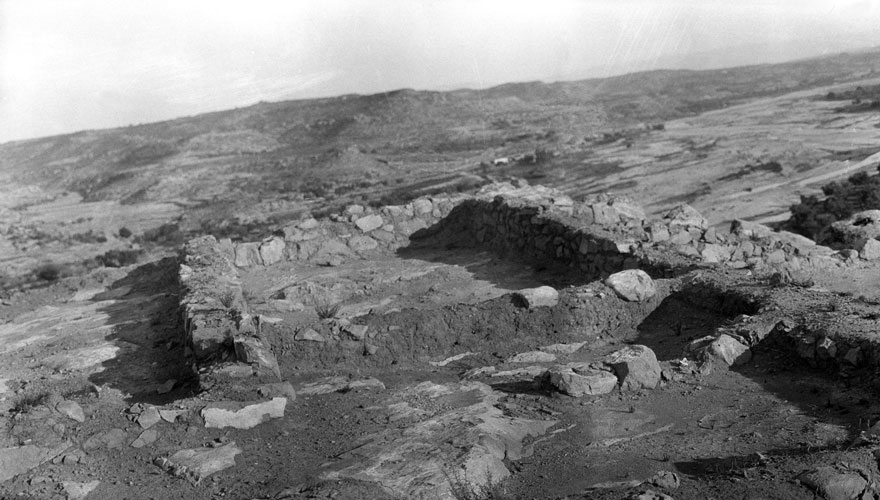
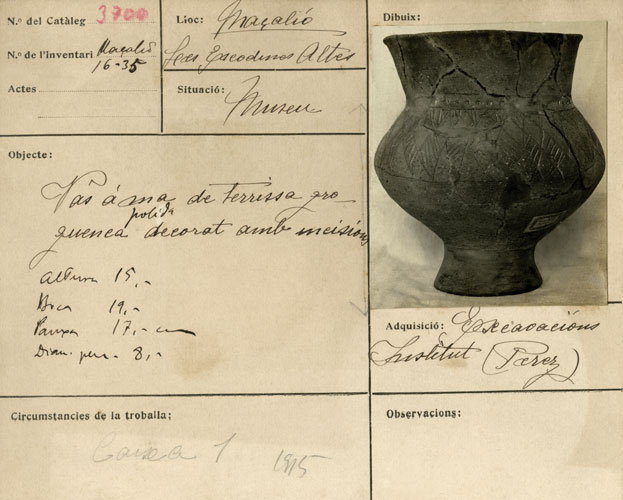
Entrance to the Iberian settlement at La Gessera (Caseres). Main street. 1914.
MAC Photographic Archive.
Working in the extreme SE corner of the archaeological excavation of the Iberian settlement at La Gessera (Caseres). 1914.
Unknown author.
MAC Photographic Archive.
Room in the northern sector of the Iberian settlement of Les Escodines Altes (Massalió, Terol). Between 1915 and 1916.
Unknown author.
MAC Photographic Archive.
Data sheet for a pottery vase found in the excavations at Les Escodines Altes (Massalió, Terol). Between 1915 and 1916.
IEC data sheet.
Unknown author.
MAC Photographic Archive.
General view of the summit on which the Iberian settlement of Sant Antoni and the church of the same name are located (Calaceit, Terol). Between 1919 and 1920.
Unknown author.
MAC Photographic Archive.
The first explorations
The Institute of Catalan Studies fulfilled the ambition of Matias Pallarés, a member of the Boletín group and a tailor in Barcelona, who contended that the IEC should excavate in Baix Aragó. The minutes of the meeting of the Historical-Archaeological Section on 15 September 1914 – the Mancommunity already existed – record in detail what was a historic day for both Catalan and Iberian archaeology: “[…] Sr. Martorell […] reports that we have the opportunity to begin certain excavations that […] will provide notable results […] The sites to be explored are where the frontiers of Catalonia, Valencia and Aragó meet in the area between Calaceit, Casseres and Maçalió […] Sr. Pallarés has met with many prominent local citizens from the area and […] all are in agreement […]”.
Therefore, the Institute agreed to devote the sum of 1,000 pesetas to beginning the excavations “[…] and to name Sr. Bosch Gimpera, well known for his skill in this type of work, as the director of said excavations”.
Drawn-out negotiations with Juan Cabré
By September 1914 Juan Cabré Aguiló, native of Calaceit, had long since stopped excavating the Iberian settlement of Sant Antoni de Calaceit given that, despite being theoretically in charge of the site, he was too absorbed in his research on cave art to spend any more time there. The decision taken by the Historical-Archaeological Section of the IEC to heed the words of Matias Pallarés and start work in Baix Aragó led to a number of conflicts and required a complex series of dealings before the Higher Board of Excavations and Antiquities in Madrid would provide the necessary permits.
Nevertheless, after a tough series of negotiations and pressure from certain political and academic circles in Madrid, Cabré renounced all his legal rights and agreed to share certain functions so that in the future both the Institute of Catalan Studies and the Commission for Palaeontological and Prehistorical Investigations from Madrid could work in Aragó.
Thus, in autumn 1914 the Institute’s men arrived in Baix Aragó: Bosch Gimpera participated in the excavations led by Matias Pallarés at La Gessera in Caseres and directed for the IEC the partial excavation of Tossal Redó and the initial explorations at Serra Mitjana in Caseres. In the same year, Josep de C. Serra-Ràfols excavated at La Torre Cremada de Valdeltormo and prospected a large number of other sites.
Between 30 July and 5 November 1915, Bosch Gimpera conducted the first systematic excavation at Sant Antoni de Calaceit. In September, Vidiella Jassà, Ejerique Ruiz and Pérez Temprado excavated El Piuró del Barranc Fondo (Massalió); the third of these archaeologists also worked at Les Escodines Altes i Baixes and at Sant Cristòfol de Massalió. Finally, Josep Colominas and Agustí Duran excavated at Vilallonc and on many tumuli.
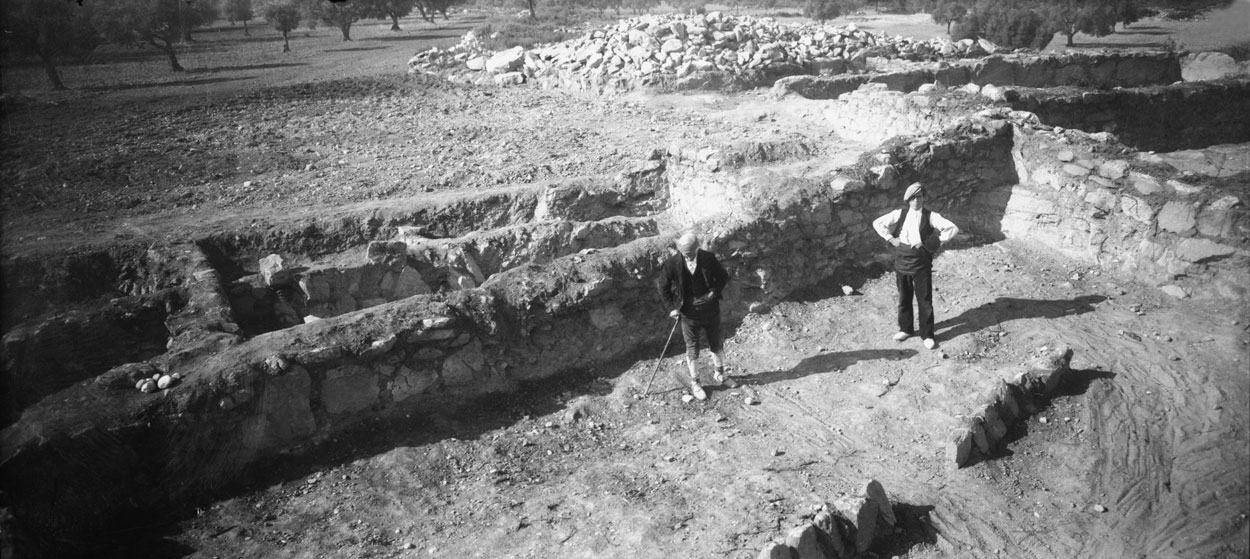
Excavations at the Iberian settlement of Vilallonc (Calaceit, Terol). 1915.
MAC Photographic Archive.
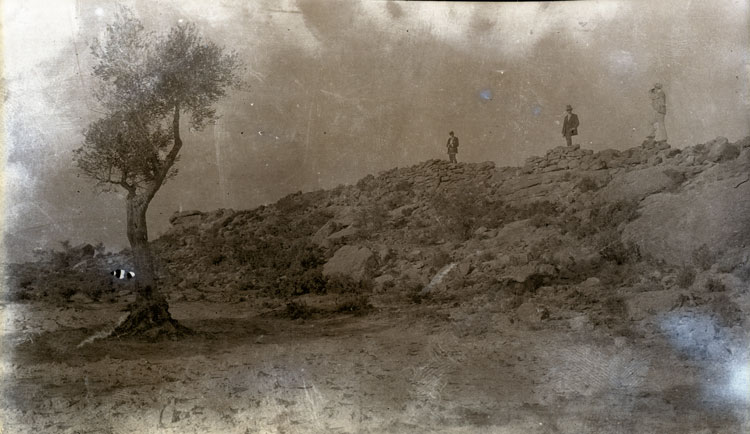
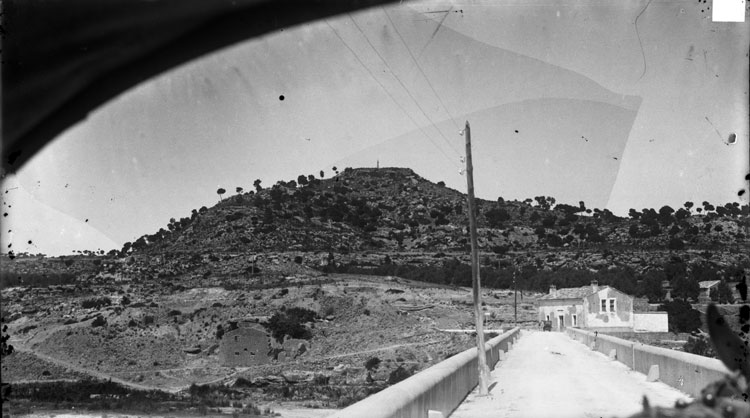
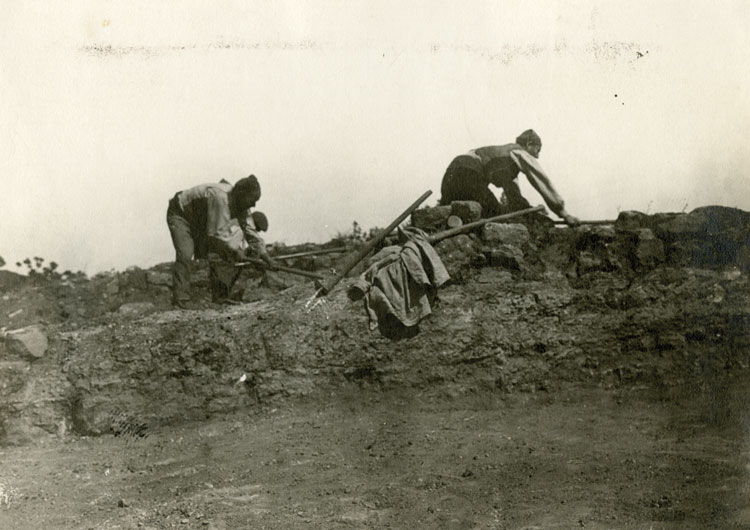
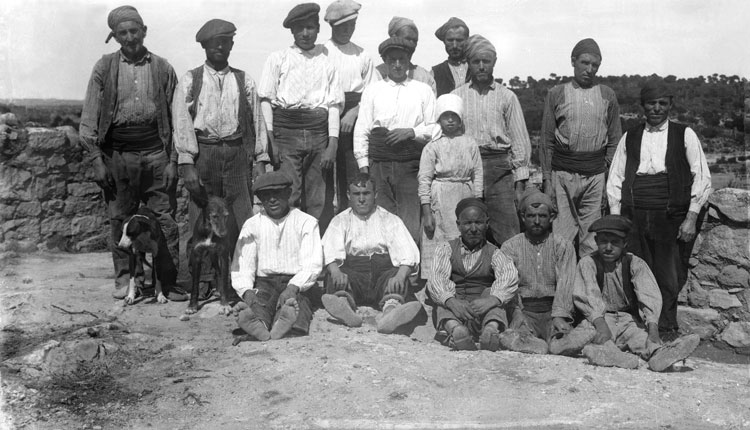
Les Escodines Baixes (Massalió). Between 1913 and 1914.
Unknown author.
MAC Photographic Archive.
General view of the hill and the Iberian settlement of El Piuró del Barranc Fondo (Massalió, Terol). Between 1916 and 1919.
MAC Photographic Archive.
Excavations in the Iberian settlement of El Piuró del Barranc Fondo (Massalió, Terol). Between 1916 and 1919.
IEC data sheet.
MAC Photographic Archive.
Excavating the Iberian settlement of El Piuró del Barranc Fondo (Massalió, Terol). Between 1916 and 1919.
IEC data sheet.
MAC Photographic Archive.
Donations of archaeological remains by the local grandees of Baix Aragó
The ties between the IEC and the authorities in Barcelona, on the one hand, and the local grandees from Baix Aragó, on the other, became ever stronger. Thus, the minutes of the Historical-Archaeological Section from 3 December 1915 note the donation to the IEC by Pérez Temprado of his collection of objects from Baix Aragó in the form of 10 crates and eight parcels sent to Barcelona.
In addition, before the start of the excavations at Sant Antoni, Santiago Vidiella and Julián Ejerique had donated in 1915 to the Institute a mixed lot of pieces from the sites they and Juan Cabré had already excavated.
Pieces from the treasure of Montilla (Còrdova) acquired by Juan Cabré. Photographed for the exhibition Primitive Spain. Art in Spain, 1929.
MAC Photographic Archive.
The acquisition of the Cabré Collection
Despite the initial problems, Cabré’s decision to sell an important part of his private archaeological collection to Catalonia marks without doubt the highpoint in this relationship. On 11 November 1918, the Barcelona Museums Board officially notified Juan Cabré that they were prepared to pay him 14,000 pesetas for the collection (that he had first offered at 15,000 pesetas). It contained a series of highly important pieces such as the treasure from Montilla (Córdoba), cave paintings from Calapatà (Cretes, Terol) and Iberian material from Baix Aragó and the Sanctuary of El Castellar de Santisteban (Jaén), amongst other finds, which today are on show in the Catalan Museum of Archaeology in Barcelona.
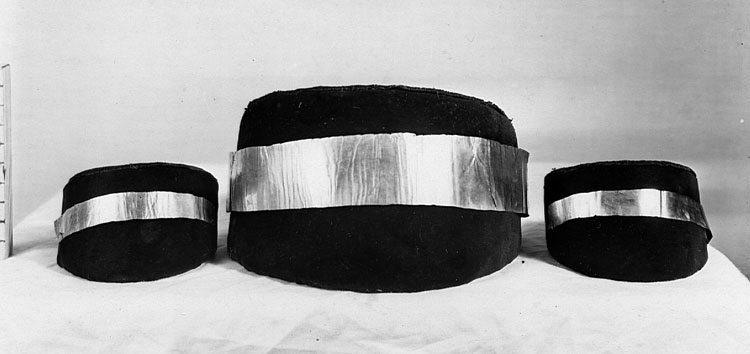
The final impulse
Between 1915 and 1923 many prospections – known as excursions – and excavation projects were still in progress at numerous sites or ‘stations’. Work was still continuing on 2–26 September 1919 at Sant Antoni de Calaceit, although henceforth the number of active sites began to fall substantially, albeit with exceptions such as the Balma del Canyaret, also in Calaceit, which was excavated in 1919–1920.
The dictatorship of Primo de Rivera, declared on 13 September 1923, altered many aspects – including its excavations in Baix Aragó – of the work of the Institution. The Mancommunity was supressed in 1925, which meant that no more funding was forthcoming for the IEC and so further archaeological research in Baix Aragó became impossible.
View of the wall of the Iberian settlement at El Tossal Redó (Calaceit, Terol). Between 1914 and 1917.
MAC Photographic Archive.
Northern sector of the Iberian settlement of Sant Antoni (Calaceit, Terol); El Tossal de Sant Cristòfol stands in the background. Between 1916 and 1920.
MAC Photographic Archive.
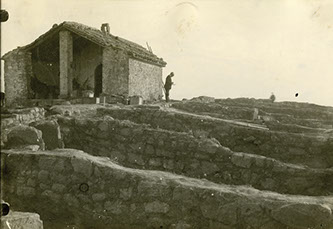
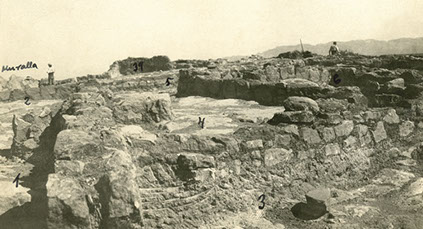
Excavations in rooms near the tower of the Iberian settlement of Sant Antoni (Calaceit, Terol). Between 1919 and 1920.
MAC Photographic Archive.
Chamber nº 4 of the archaeological site at El Tossal Redó (Calaceit, Terol). Between 1914 and 1917.
MAC Photographic Archive.
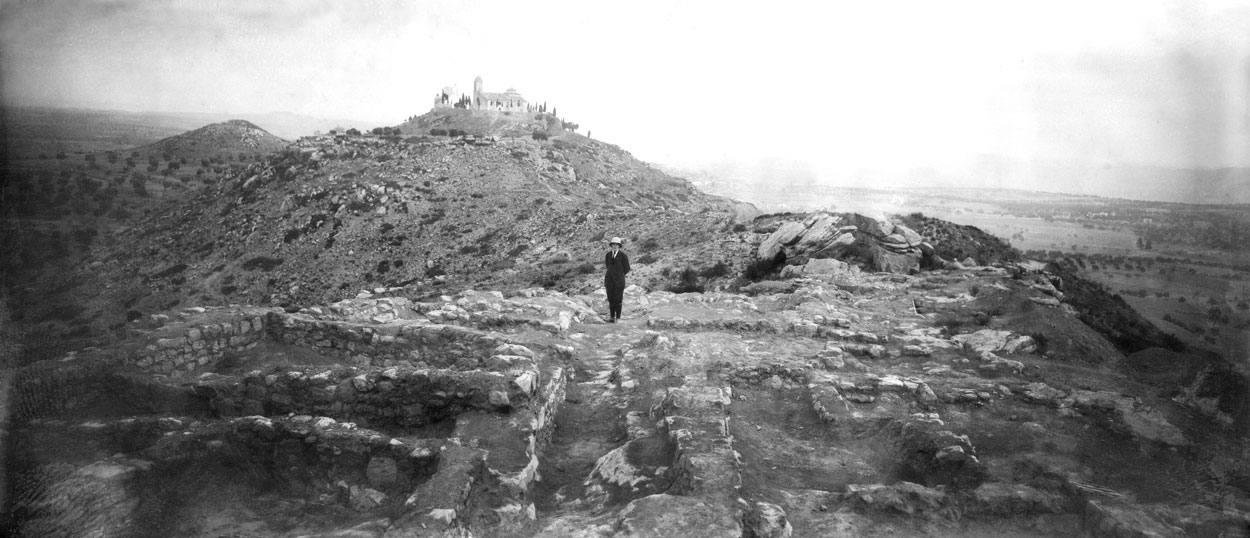
Pere Bosch i Gimpera at the Iberian settlement of Sant Antoni (Calaceit, Terol). Between 1916 and 1920.
MAC Photographic Archive.
